The Flux Lab M-Field was kindly provided free of charge in exchange for an honest review. I didn’t receive monetary or any other kind of compensation and I don’t use affiliate links. The price of a single M-Field is $1299 and you can buy it from Flux Lab online shop. You can take advantage of the pre-sale offer price which is $1199. The amplifier ships from the EU so buyers within the EU zone will not have to pay import fees and tax. The M-Field is currently in production and will be available for sale very soon.
This is the world premiere review of the Flux Lab Acoustics M-Field.
Flux Lab Acoustics
Flux Lab Acoustics is a specialized Ukrainian firm focused on the design and production of premium audio equipment. Their earlier offerings, such as the FA-10 and Volot headphone amplifiers, garnered widespread acclaim within the headphone community and are now regarded as industry standards.
Following a prolonged hiatus due to the severe Russian invasion of Ukraine, Flux Lab Acoustics has reestablished its operations and made a significant return by launching the Mentor, a top-tier solid-state headphone amplifier that has already been reviewed here.
Flux Lab Acoustics M-Field
The Flux Lab M-Field is a headphone amplifier that was created in collaboration with the Mentor, although it was launched a few months afterward. Therefore, it is not unexpected that these two amplifiers exhibit certain similarities. Nonetheless, they also possess distinct differences in their internal circuitry and sound profiles.
The M-Field model incorporates MOSFET transistors in its output stage rather than bipolar transistors, resulting in a distinctive sound signature that we will explore further. Next, let us examine the technical specifications of the M-Field.
Technical highlights
The Power Supply
The power supply of the M-Field may appear to have a simpler configuration compared to the Mentor, which incorporates two transformers instead of one. However, this is not the case. The M-Field features a sophisticated power supply that utilizes a single, specially engineered power transformer tailored for this amplifier model. This transformer includes separate windings dedicated to powering the right and left channels. Notably, it is larger than the transformers used in the Mentor, with an advanced design that significantly increases production costs. The power transformer is characterized by a very low dissipation field and minimal noise, enabling the amplifier circuit to operate without noticeable hum, even with high-sensitivity headphones.
Additionally, the power supply is equipped with four high-capacity capacitors from Cornell Dubilier, which contribute to a dynamic and detailed audio experience. Flux Lab also employs an Ultra Pure Oxygen Free Copper (UP-OFC) power cable from Neotech, connecting the AC inlet socket to the power transformer. This configuration enhances sound focus in the low-frequency range and provides greater impact in the mid and high frequencies.
The Power Amplifier
The output stage functions in class A, enabling the transmission of low-amplitude signals with exceptional precision. The amplifier design incorporates J-Fet transistors at the input and MOSFET transistors at the output. To guarantee outstanding dynamic performance with even the most challenging headphones available, the amplifier circuitry is powered by a 70-volt supply.
Improvements in the heat sink design allow the amplifier circuitry to be ready for use quickly, achieving optimal sound quality after just 15 minutes of warm-up time. Additionally, the heat sink is strategically positioned beneath certain PCB components, facilitating a faster startup and enhancing the overall thermal stability of the circuitry.
To maximize the amplifier’s performance without any compromises, high-quality Ohno monocrystalline copper (UP-OCC) cable is used at the output.
The Volume Control
The volume control system utilizes a relay attenuator, offering 64 precise adjustment steps. It incorporates Panasonic fast signal relays known for their low contact resistance within the control circuit. The analog signal is directed to the relay attenuator positioned adjacent to the input sockets, while the ALPS variable potentiometer from the Blue Velvet series is dedicated solely to control functions.
This configuration permits the traditional potentiometer to manage volume, with the analog signal routed to a relay control near the input jacks, ensuring high sonic transparency even at lower volume levels. The M-Field is equipped with an advanced volume control program that enhances system responsiveness and overall user experience. This design effectively addresses volume imbalances between channels and allows for precise level adjustments, particularly beneficial for high-sensitivity headphones.
Electronic components and PCB
Flux Lab uses only premium components in the construction of the M-Field, including Takman resistors (Rex series), PRP resistors, and capacitors from Cornell Dubilier, Nichicon, Wima, and Epcos, among others. One does not need to be an electronics engineer to appreciate the skilful assembly of the internal circuitry; the PCB resembles a work of art.
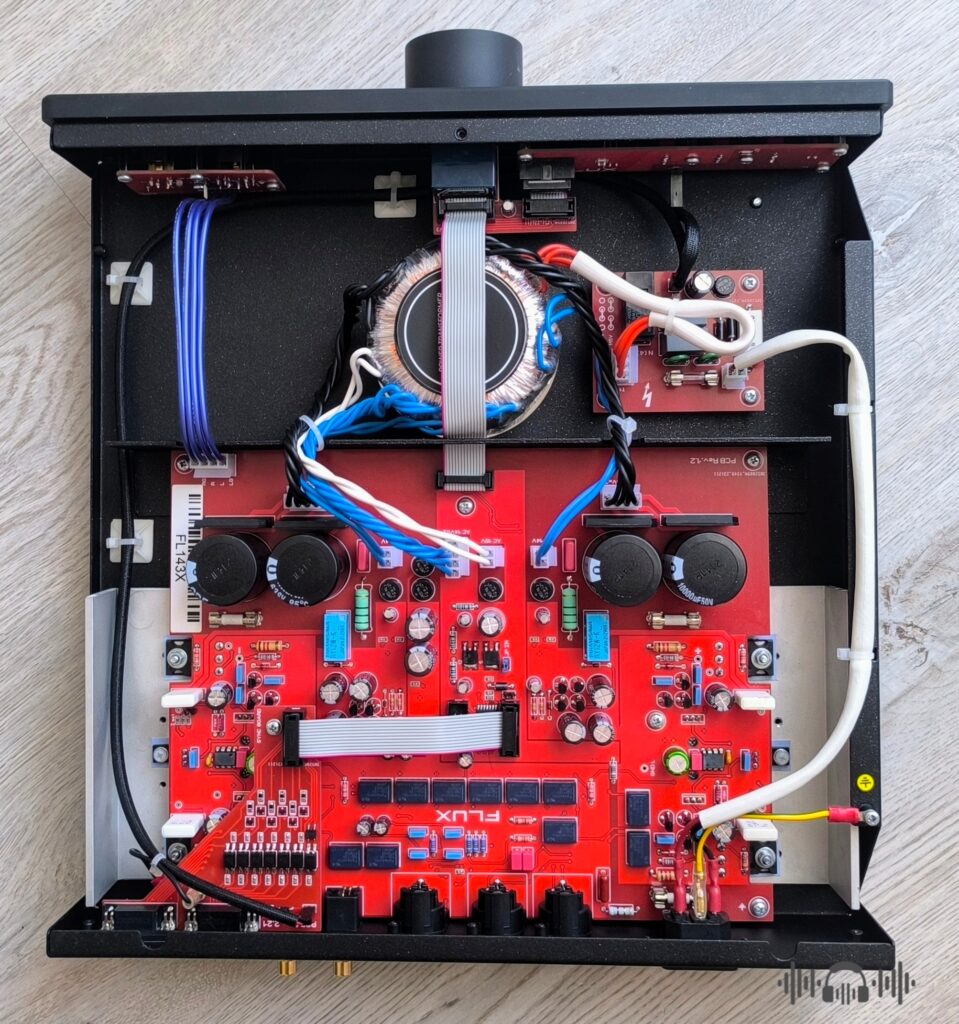
The Mono input module
The M-Field is equipped with a distinctive mono input module that was first introduced with the Mentor, enabling the synchronization of two amplifier units in a dual-mono configuration for enhanced power output. When two M-Fields are linked in dual-mono mode, each amplifier channel functions in a fully balanced manner. Users can easily designate one unit as the master and the other as the slave.
The synchronization system also facilitates control over the second amplifier, ensuring that when the master unit is powered on, the secondary unit automatically powers on as well. Flux Lab assures complete consistency, including the tone of the front panel, only when both units are purchased together.
Optional remote control
You can easily modify and silence the volume of the M-Field using the optional remote control, which is available for purchase. You can select between a $15 plastic remote or a $50 full aluminum version. While the latter may be pricier, it offers superior quality and durability, being made from CNC machined aluminum with a sleek black anodized finish. This remote features a stylish and minimalist design that complements the amplifier’s aesthetics.
The remote is not included as a standard accessory to keep costs down, allowing users who plan to utilize the M-Field in a desktop setup to save money. Since the volume control employs a relay stepped attenuator, the volume knob will not visibly rotate during adjustments; however, each time you interact with the knob, the volume will automatically return to its preset position.
Optional power cable upgrade
Flux Lab recommends utilizing a premium power cable to improve the audio performance of the M-Field. They offer a custom-designed cable that incorporates the NEP-5002 conductor from Neotech. This cable is constructed with thick conductors (0.42mm) made from ultra-pure oxygen-free copper (UP-OFC). The ground conductor has a reduced cross-section (1.43mm), resulting in a slim and flexible design that enhances user experience. It effectively shields against external electromagnetic interference, featuring an internal aluminum foil shield and a drain wire. The internal space is filled with synthetic fiber, providing flexibility and a “memory” effect that allows the cable to maintain its position easily.
Each cable is carefully hand-crafted and fitted with high-quality Viborg or Supra mains plug connectors, which include gold-plated brass and copper contact groups. The cable is available in a length of 1.8 meters (6 feet). During checkout, customers can choose from various configuration options. The price for the cable with Supra plugs is $95, while the version with Viborg plugs is priced at $130.

Design and appearance
The M-Field closely resembles the Mentor, with the only distinguishing feature being the aluminum volume control knob, which has a subtly different design. Both volume knobs possess a unique and stylish appearance, making it challenging to determine which is more visually appealing. Personally speaking, I find the M-Field to be just a bit more attractive option.
The M-Field features a solid and thick front panel crafted from CNC machined aluminum, finished with a smooth anodized coating. In contrast, the remainder of the chassis is constructed from standard steel sheet, coated in black paint. The faceplate is offered in two color options: coal black and titanium gray. To enhance stability and minimize vibrations, four anti-vibration feet are pre-installed at the base of the chassis.
Weighing 6kg and measuring 342x397x82mm, the M-Field is deeper and narrower than typical industry standards, which may pose challenges when positioning it alongside or beneath other audio equipment.
Interface and connectivity
The Flux Lab M-Field is a dedicated headphone amplifier, devoid of any preamplifier capabilities or a digital section. It is equipped with both balanced XLR and unbalanced RCA line inputs, conveniently positioned at the rear of the device. Users can connect both input types simultaneously and choose between them using the corresponding switch located on the front panel. Additionally, the rear section includes the AC input and a synchronization interface.
The front panel is distinguished by a minimalist design, featuring power on/off, input selection, and gain adjustment switches on the left side. The central area is dominated by the prominent volume control knob, while the right side offers two headphone outputs: a combined 6.35mm jack and 3-pin XLR for mono operation, alongside a dedicated 4-pin XLR output.

Power output, heat and noise
The power output of a single M-Field amplifier is 9.6W at 32Ω and 1.6W at 300Ω per channel, positioning it among the most powerful headphone amplifiers available, though it is slightly less powerful than the Mentor model.
In a dual mono configuration, the M-Field can deliver an impressive 26.1W at 32Ω and 5.1W at 300Ω per channel, providing sufficient power to drive virtually any headphone effortlessly. However, the advantages extend beyond sheer power; a dual M-Field setup enhances sonic performance, offering improved separation and imaging, a wider soundstage, and greater dynamic range.
This amplifier features three gain settings—low, medium, and high—allowing for optimal matching with different loads. Users can easily select their preferred gain using the dedicated switch on the front panel. With a remarkably low output impedance of 0.1Ω, it is capable of driving low impedance loads, including sensitive earphones, thanks to its low noise floor, which is quite impressive given its power capabilities.
The relay attenuator allows for volume adjustments in 1.5dB increments across a total of 64 steps, enabling precise control without rapid increases in loudness. The M-Field can effectively drive the Hifiman Susvara at just 40-50 steps on the medium gain setting. Notably, the only area of the M-Field that becomes mildly warm, even under heavy use, is the rear side of the bottom, making it suitable for placement in less ventilated spaces, such as on a shelf.
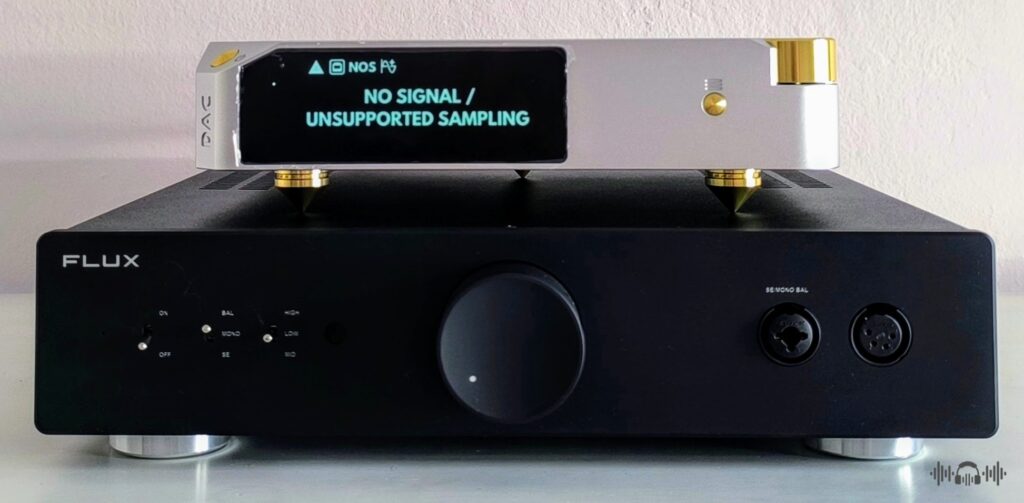
Listening impressions
Where are the tubes?
Have you ever considered purchasing a tube amplifier but hesitated due to concerns about handling tubes and the potential complications they bring? Now, you can enjoy the essence of tube sound without the need for a traditional tube amplifier. How can this be achieved? Simply acquire the Flux Lab M-Field, a solid-state amplifier that delivers a remarkably tube-like sound without the hassle of the tubes.
MOSFETs instead of tubes
MOSFETs possess a remarkable capability to emulate tube sound when utilized correctly, and the M-Field exemplifies innovative engineering that has not been seen at this price level. The M-Field delivers a rich and musical experience, producing sound that feels incredibly authentic and vibrant. The music flows naturally, engaging the listener’s senses in a manner reminiscent of the finest tube amplifiers.
The M-Field offers an immersive and holographic sound, generating natural and organic timbres with vibrant harmonies that exhibit a rich saturation akin to tube amplifiers, yet it avoids common drawbacks such as background noise, haziness, bloom, or lack of control. Typically, one would need to invest in a costly tube amplifier to eliminate these issues. While it is true that no solid-state amplifier can fully replicate the performance of a premium tube amplifier, the M-Field comes remarkably close without the need for tubes or a significant financial investment.
It’s all about the music
The M-Field offers a subtly warm and smooth sound profile, avoiding any dark tonal characteristics. Its mid-range is particularly noteworthy, delivering an expressive, articulate, and musical experience that captivates listeners with its remarkable timbre quality. The sound is both organic and reminiscent of analog systems, making instruments and voices appear strikingly lifelike with outstanding tonal precision. There is no hint of op-amp artificiality, nor any sense of fakeness or sterility; harsh treble or metallic overtones are absent. You can be confident that the M-Field functions like a true musical instrument, conveying music with authenticity and emotional depth.
Technical superiority
The M-Field offers an impressive approximation of high-quality tube sound while maintaining the technical excellence found in top-tier solid-state amplifiers. The Flux Lab M-Field masterfully merges exceptional musicality with outstanding fidelity and clarity. Its frequency response is both flat and linear, avoiding any bass enhancement, treble reduction, or other manipulative techniques to alter the sound profile. The amplifier exhibits remarkable technical performance and precision, comparable to that of the Mentor. Rest assured, its warm and inviting nature doesn’t mean that will alter the sound profile of your headphones; bright headphones will retain their brightness, while warm headphones will continue to sound warm, like it or not.
Headphones and source matching
The M-Field is particularly well-suited for headphones that are bright and lean in sound profile. This compatibility arises not from a reduction in treble levels, as an equalizer would do, but rather from its ability to avoid accentuating their brightness while enhancing their lean characteristics by introducing additional weight and reinforcing the bass. Some may assume that headphones with a warm and thick sound signature would not pair effectively with the M-Field; however, this is a misconception. Personally, I found the Meze Empyrean enjoyable, as its sound did not come across as overly thick or warm. The exceptional technical performance and clarity of the M-Field effectively balanced its other sonic traits.
Similarly, the M-Field demonstrated versatility, performing well with both technical D/S DACs and more musical, analog-sounding sources, such as the Laiv Harmony DAC.
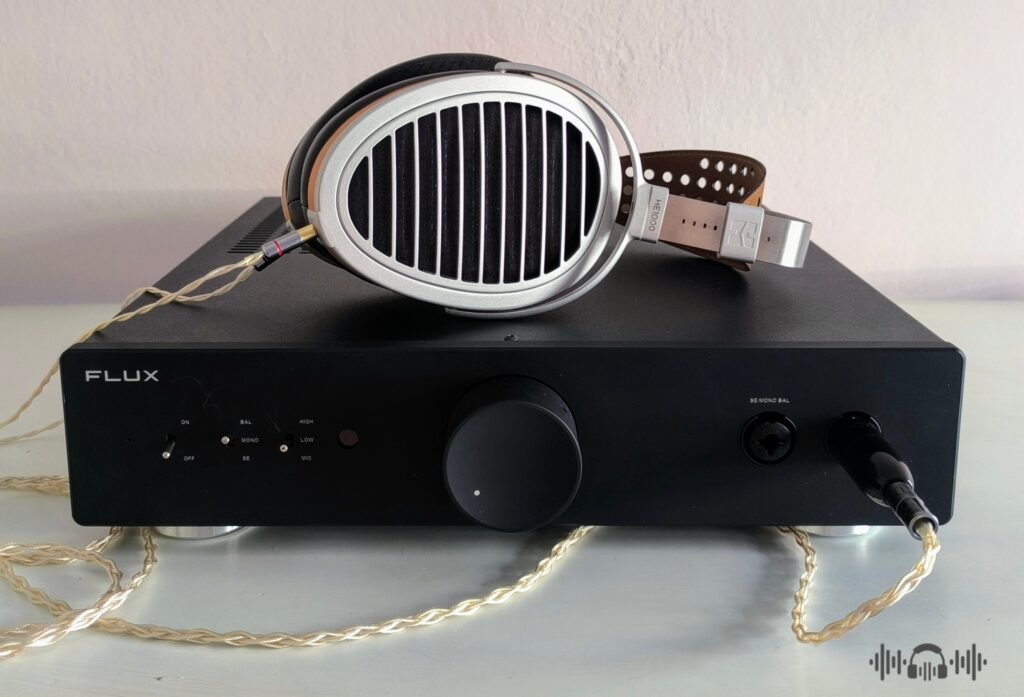
More listening notes
The bass is full bodied and weighty, characterized by a rich texture and remarkable definition. It allows for effortless tracking of intricate bass lines, enabling listeners to distinguish even the subtlest notes, delicate plucking, or soft bowing on the strings, whether in staccato or legato forms. The sound is profound and resonant, showing authentic dynamic variations while effectively capturing the natural reverberation of the recording space. It possesses an elastic quality without being loose, avoiding any dryness or thinness, while maintaining a tightness and responsiveness that aligns with the tempo of the music. The amplifier delivers a dynamic and powerful performance, skillfully blending the bass with other frequencies without overwhelming the listener or inducing low-end fatigue.
The treble is rather smooth and forgiving, lacking any harshness, yet it possesses a vibrant energy and plenty of light. This ensures that it remains lively and avoids any sense of dullness while sounding polite without aggression. The retrieval of detail and resolution is impressive, though it does not quite reach the heights of the Mentor model. The M-Field has been intentionally designed to offer a less analytical and magnifying sound compared to its counterpart, emphasizing a more intimate and musically engaging experience rather than prioritizing sheer technical precision and resolution.
About the soundstage
The soundstage offers a unique presentation, characterized by a remarkable sense of spaciousness despite its more compact dimensions compared to the Mentor. The experience is notably intimate, allowing the listeners to feel as though they are seated near the performers. Simultaneously, the depth and layering are so well-executed that the music never comes across as a mere wall of sound, despite the closeness to the stage. This soundstage is exceptionally holographic and immersive, providing excellent separation between individual performers and various groups of instruments, while also allowing for a clear perception of the ambient details captured in the recording.
Vs the Flux Lab Acoustics Mentor
Several distinctions in sonic presentation between the Flux Lab M-Field and the Mentor were highlighted throughout the review, and here is a concise summary.
Except for offering slightly greater power, the Mentor also excels in transparency and overall technical performance without compromising musicality. The Mentor is notably more dynamic and impactful on the low-end, whereas the M-Field presents a softer sound profile but delivers weightier and more visceral textures. The bass on the M-Field is characterized by a fuller and more elastic quality, accompanied by increased reverberation, making it less dry compared to the Mentor. However, the Mentor surpasses in terms of control, layering, definition, and the complexity of texture structure, demonstrating greater accuracy and precision.
The Mentor offers a musical and captivating experience, yet it falls short of the tube-like essence found in the M-Field, which presents a more organic and soulful sound. The M-Field offers a slightly more natural timbre and richer harmonies, delivering a warmer and more expressive mid-range along with a smoother treble. However, the Mentor excels in terms of resolution, refinement, and the quality of its textures.
The Mentor provides a more expansive soundstage compared to the M-Field, featuring superior separation and exceptional imaging capabilities. While the M-Field delivers a more intimate and holographic sound, the Mentor creates a listening experience akin to that of a grand hall.
Summing up, the Mentor exemplifies exceptional neutrality, fidelity, and transparency while maintaining a high level of musicality and engagement. However, the M-Field stands out as one of the most musical, natural, and organic solid-state amplifiers ever produced.
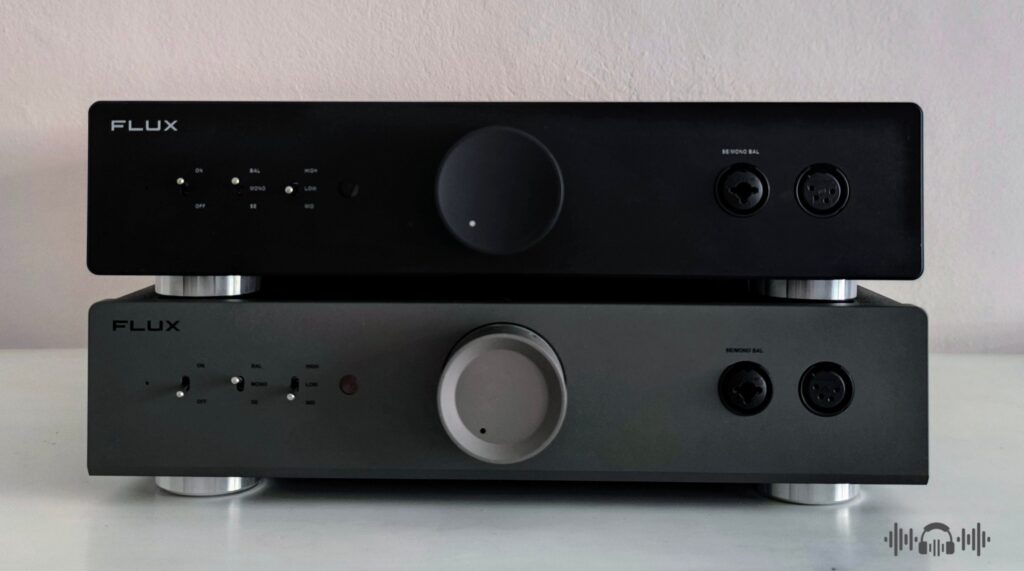
Vs the Aune S17 Pro
The Aune S17 Pro stands out as one of the finest solid-state headphone amplifiers available for under $1,000, particularly for those who prioritize musicality and realistic timbre. Similar to the M-Field, the Aune S17 Pro offers a sound profile reminiscent of tube amplifiers while maintaining commendable solid-state performance. The M-Field can be seen as an enhanced version of the S17 Pro, elevating nearly every aspect of it. Improvements can be noted in areas such as timbre realism, texture quality, transparency, definition, resolution, and overall clarity. For those who appreciate the Aune S17 Pro, the Flux Lab M-Field represents the ideal upgrade you have been seeking.
Vs various Violectric amplifiers
The Flux Lab M-Field offers a more musical and tube-like sound compared to any Violectric amplifier I can recall. It delivers a more visceral and weighty listening experience, with an added touch of warmth and soulfulness. Its overall technical performance falls between the Violectric V222 and the V330, although it does not quite match the capabilities of the V550, which is only on par with the Mentor.
Vs the Cen.Grand 9i-906
The comparison may seem somewhat skewed, as the Cen.Grand 9i-906 is priced at $4,190. Therefore, it is not surprising to find that this amplifier effectively merges the finest attributes of the M-Field and the Mentor. However, it lacks the distinctive character of both the M-Field and the Mentor, each of which possesses a unique sound profile that many audiophiles may prefer over the Cen.Grand 9i-906. Furthermore, it is important to note that the Cen.Grand is financially inaccessible for most consumers, while the M-Field and the Mentor are more affordable options and represent some of the best value in the audio market.
In the end
The Flux Lab M-Field and the Mentor can be seen as variations of a common musical motif, and those experienced in music synthesis understand the challenge of creating compelling variations on a single theme.
To conclude this review, I could simply take the conclusion from the Mentor review and substitute “Mentor” with “M-Field.” It would appear as follows:
“The launch of the Flux Lab M-Field has made premium sound quality more accessible than ever. Clearly, the Flux Lab M-Field stands out as the most affordable high-end headphone amplifier on the market, offering exceptional value and establishing itself as one of the best deals in the audio industry.”
Flux Lab Acoustics has skillfully developed two premium headphone amplifiers, each featuring a distinct sound signature to appeal to the two major audiophile demographics. One group seeks optimal technical performance while maintaining a high degree of musicality, while the other prioritizes exceptional musicality without compromising on technical excellence. Regardless of which category you identify with, Flux Lab Acoustics has a solution for you that won’t break the bank. Whether you choose the M-Field or the Mentor, you can be confident that you are investing in a remarkable high-end headphone amplifier at an unparalleled price.
Copyright – Petros Laskis 2024.
+ Class leading musicality
+ Excellent technicalities
+ Weighty and visceral bass
+ Dynamic and impactful
+ Soulful mids and smooth yet vibrant treble
+ Exceptionally natural and organic timbre
+ Excellent tonal accuracy
+ Holographic and immersive soundstage
+ Powerful but also silent
+ Three gain settings
+ Dual mono mode with two units
+ Remotely controlled
+ High quality construction
+ Design and appearance
- Not class leading in technicalities
- No preamplifier output
- The remote control is not included as a standard
- The dimensions do not adhere to the industry standard


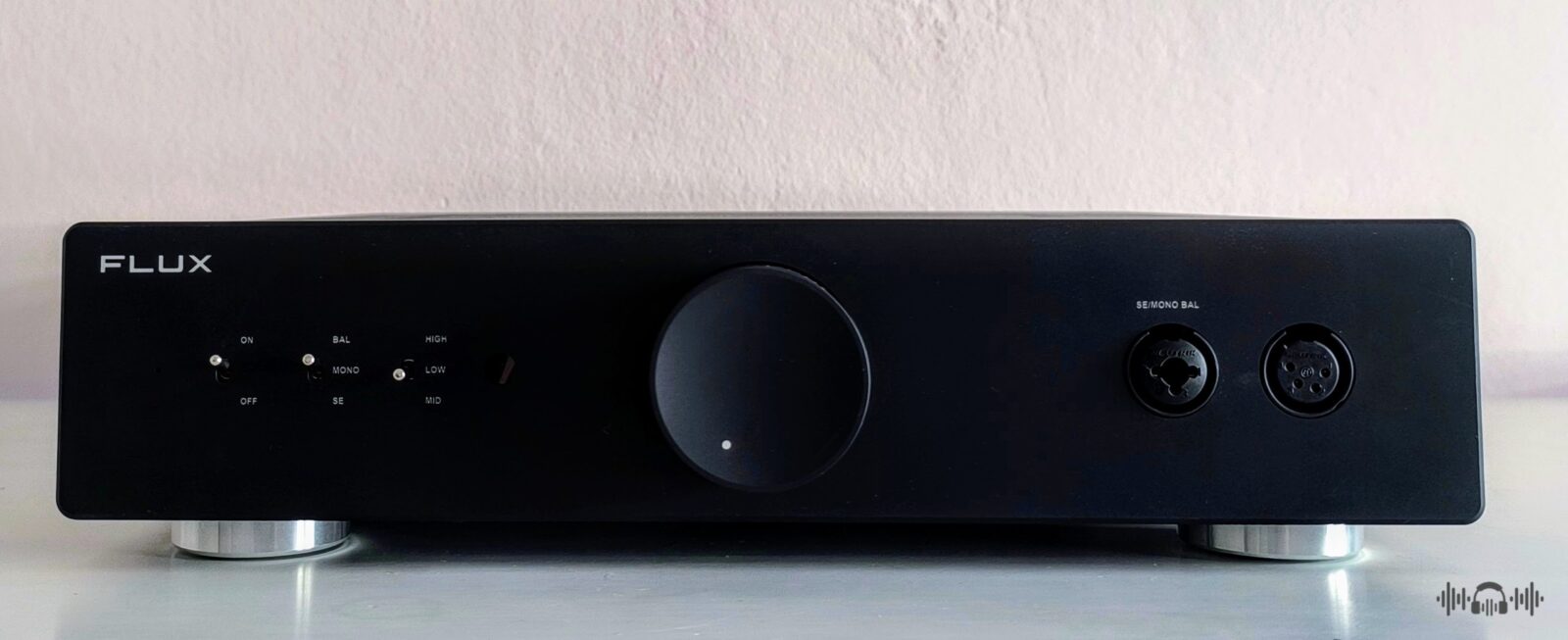


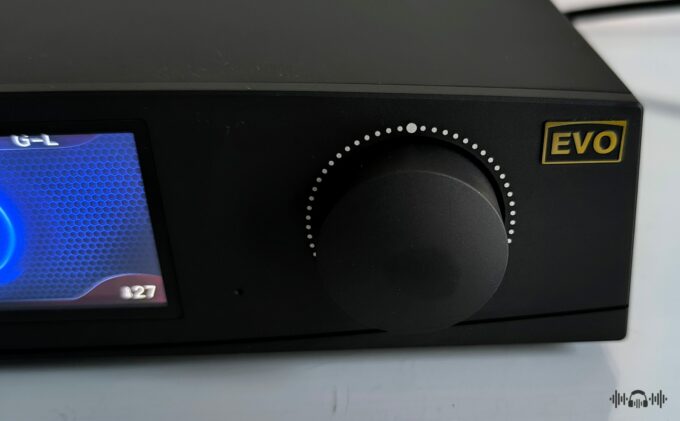


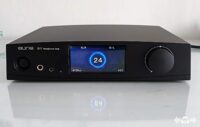


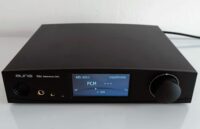




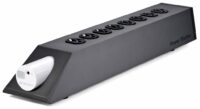




4 Comments